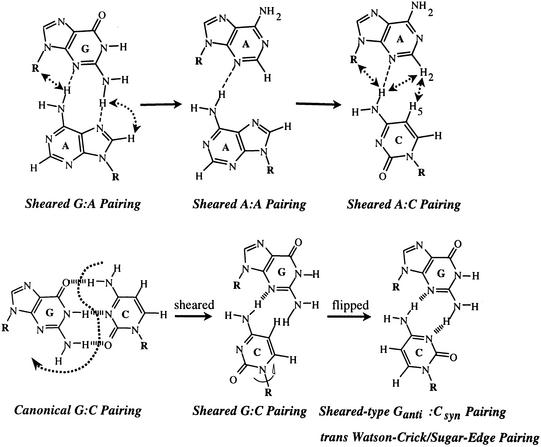Figure 1.
Extension of the sheared G·A base pair (top left) to the sheared A·A base pair (top middle) and then to the sheared A·C base pair (top right). Two H-bonds (connected by dotted lines) are possible for a sheared G·A pair, while only one single H-bond is found for the sheared A·A and A·C base pairs. NOEs detected for such sheared base pairs are denoted by dotted arrows. The bottom figures show the formation of sheared-like (or trans Watson–Crick/Sugar-edge) Ganti·Csyn base pair (right) (32) from the canonical G·C base pair (left) via the intermediate sheared G·C base pair (middle). The flipping of cytosine base to the rare syn domain is necessary to prevent the steric hindrance between the G2NH2-CH5 protons (middle). It also facilitates the formation of a second G2NH2-C3N H-bond (right).

